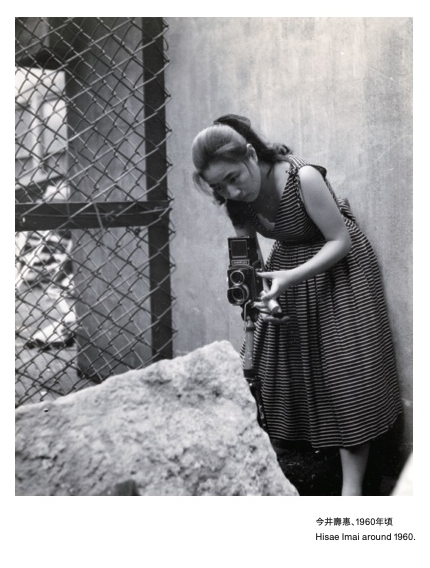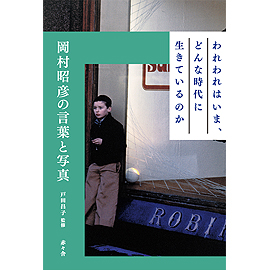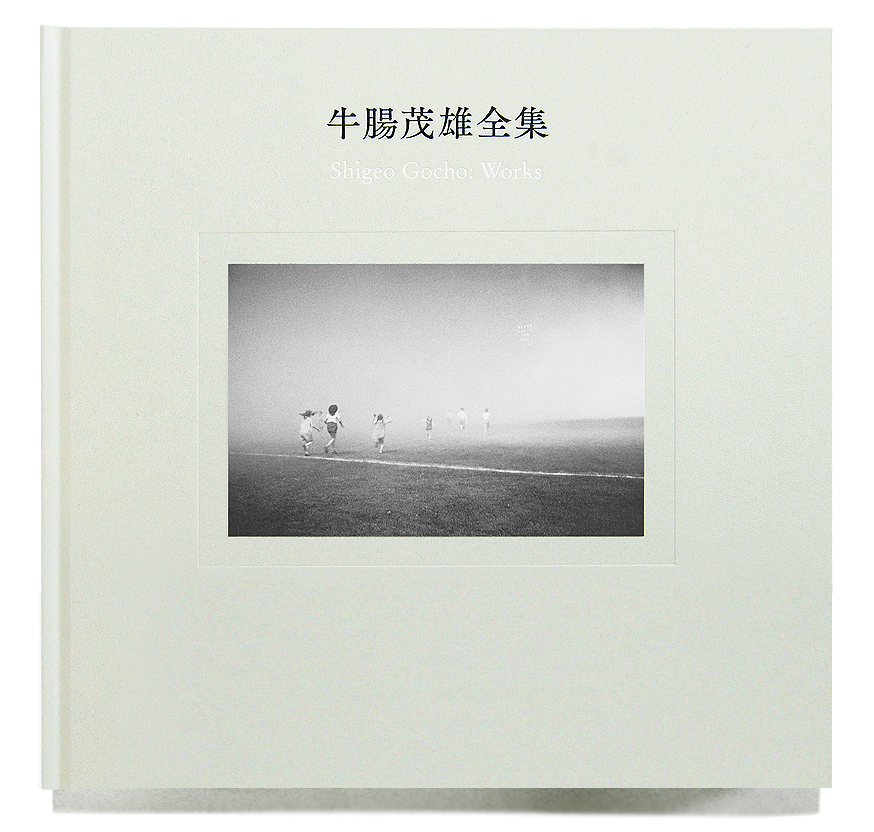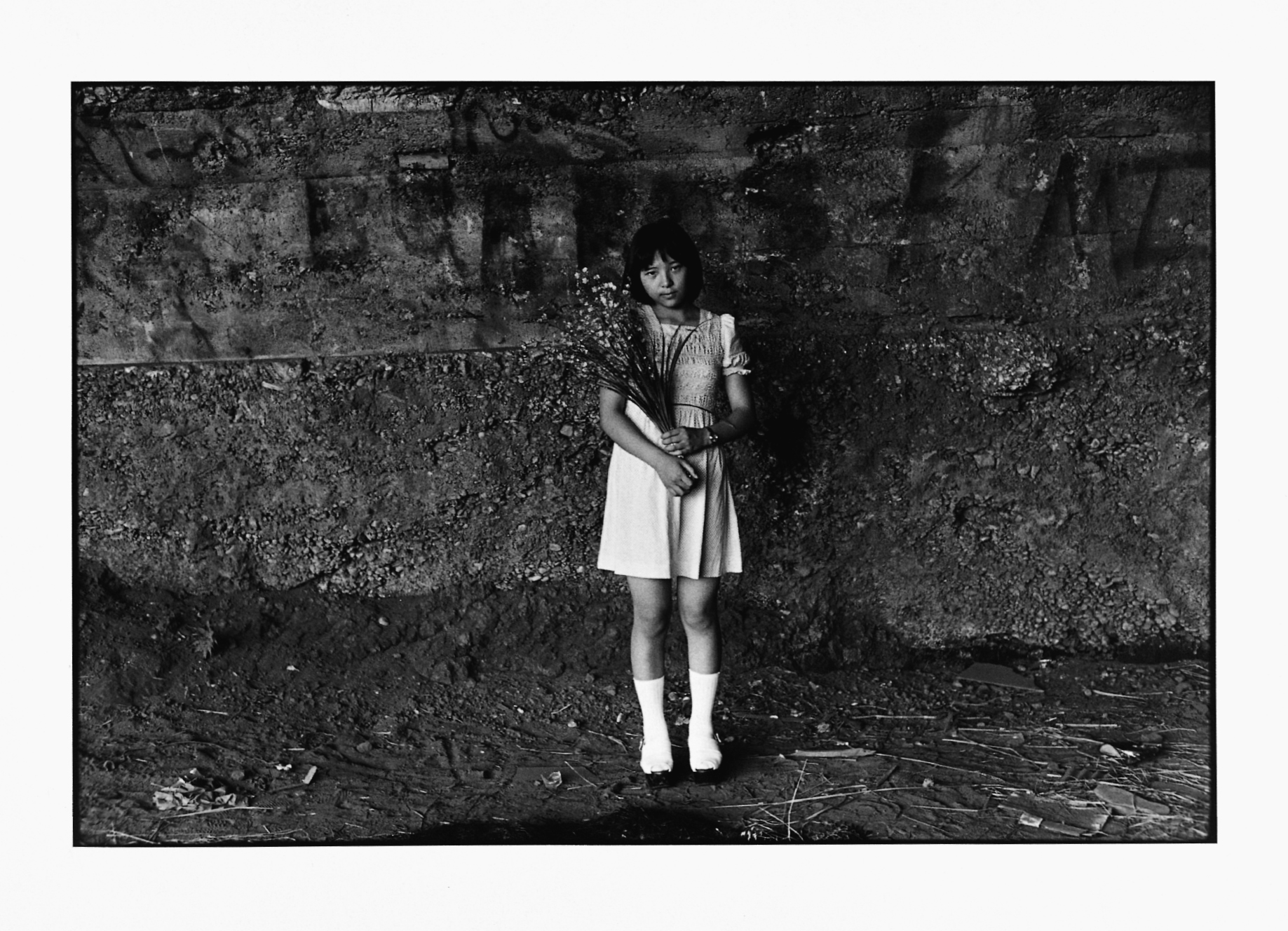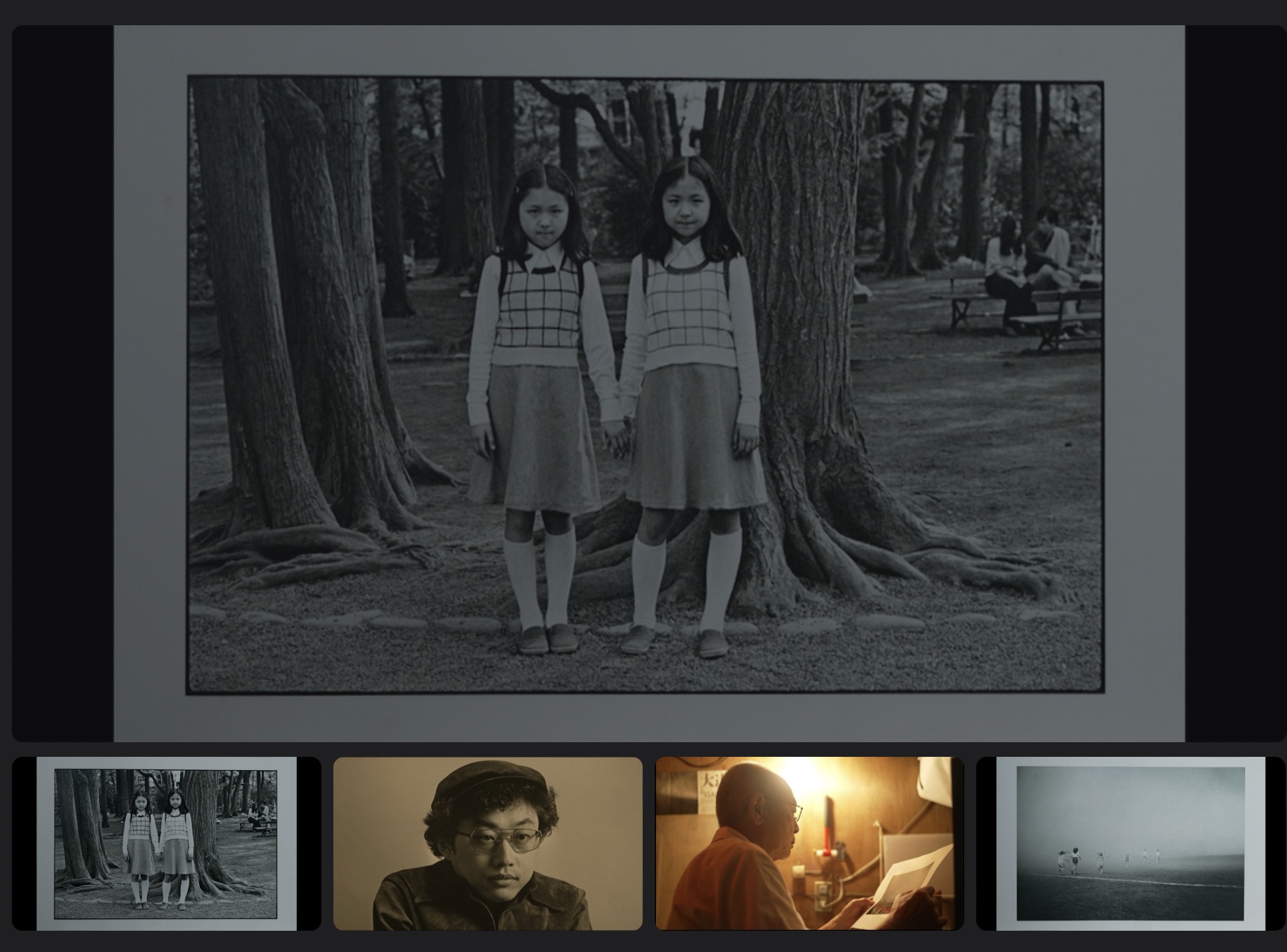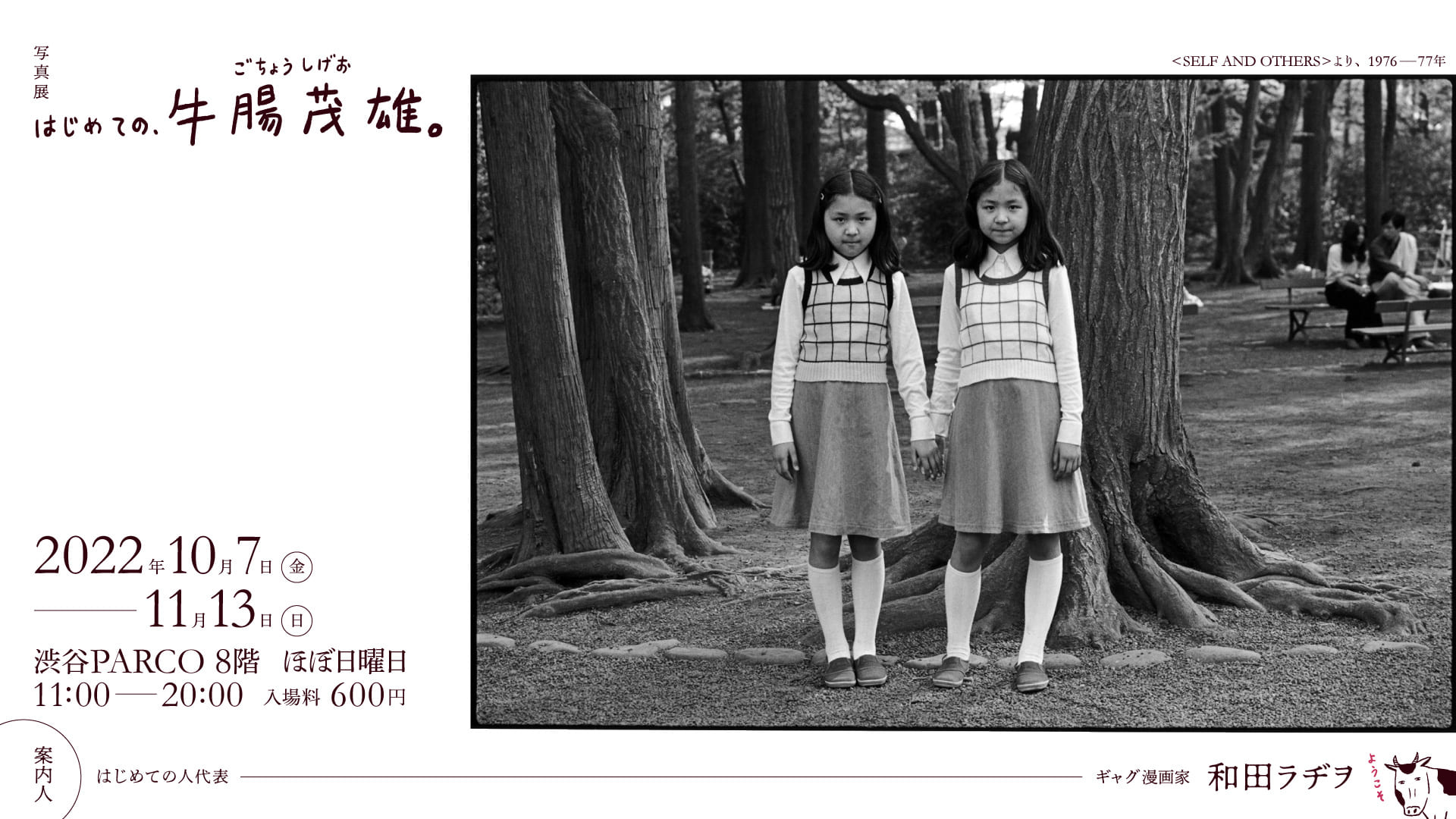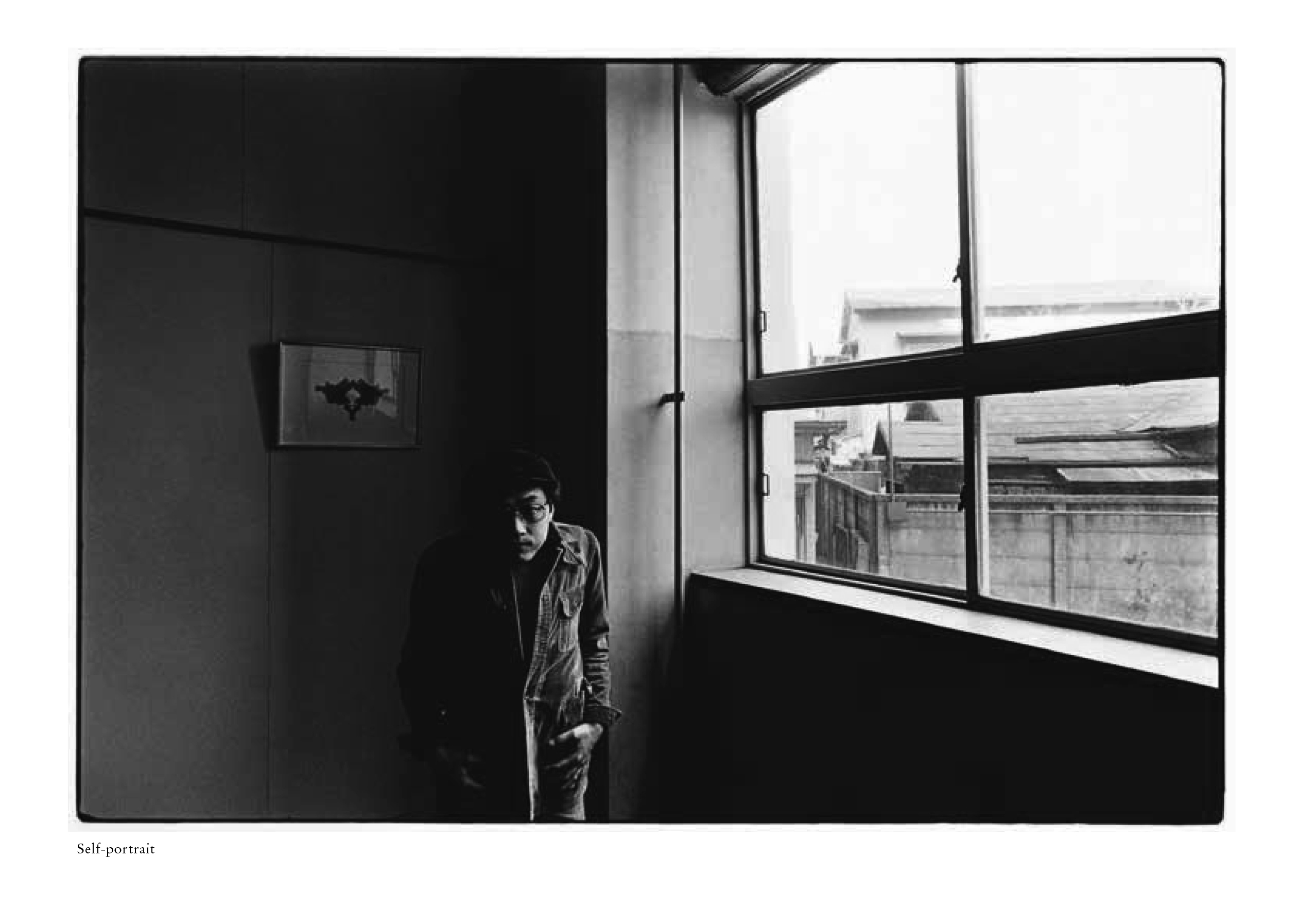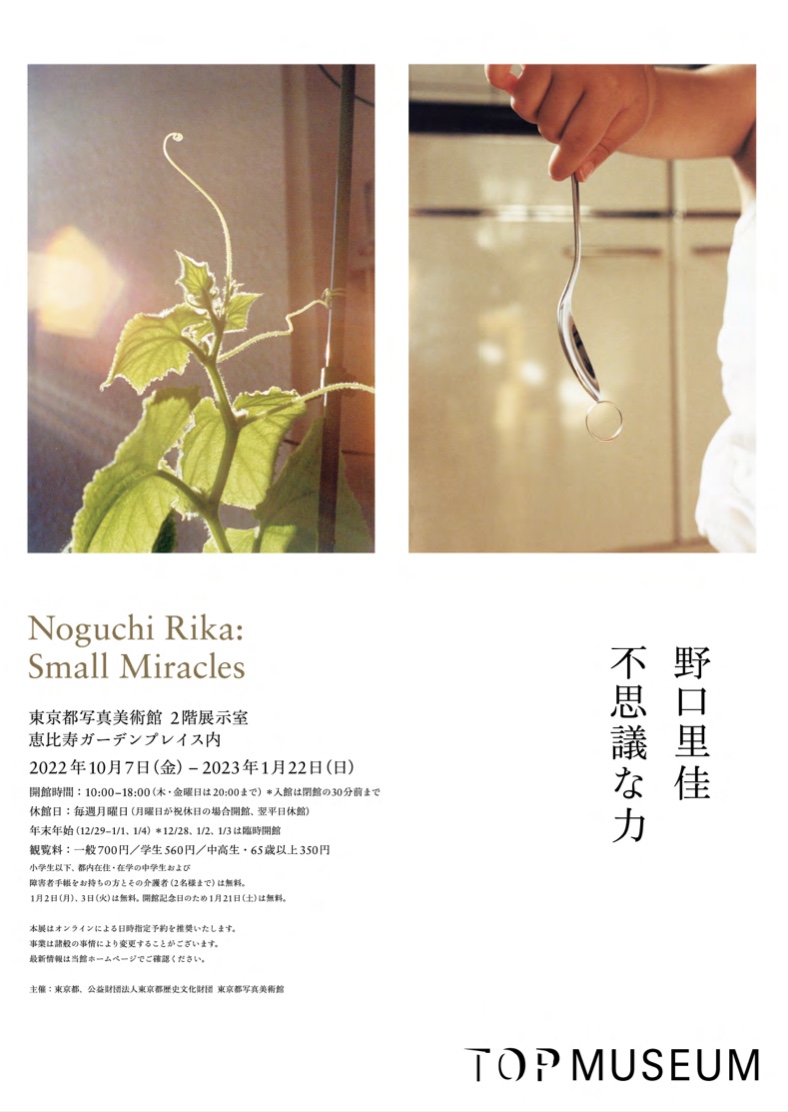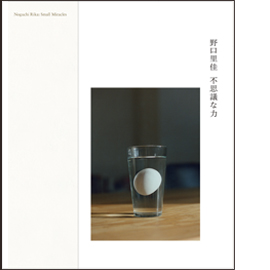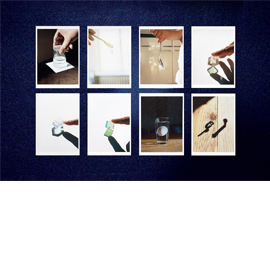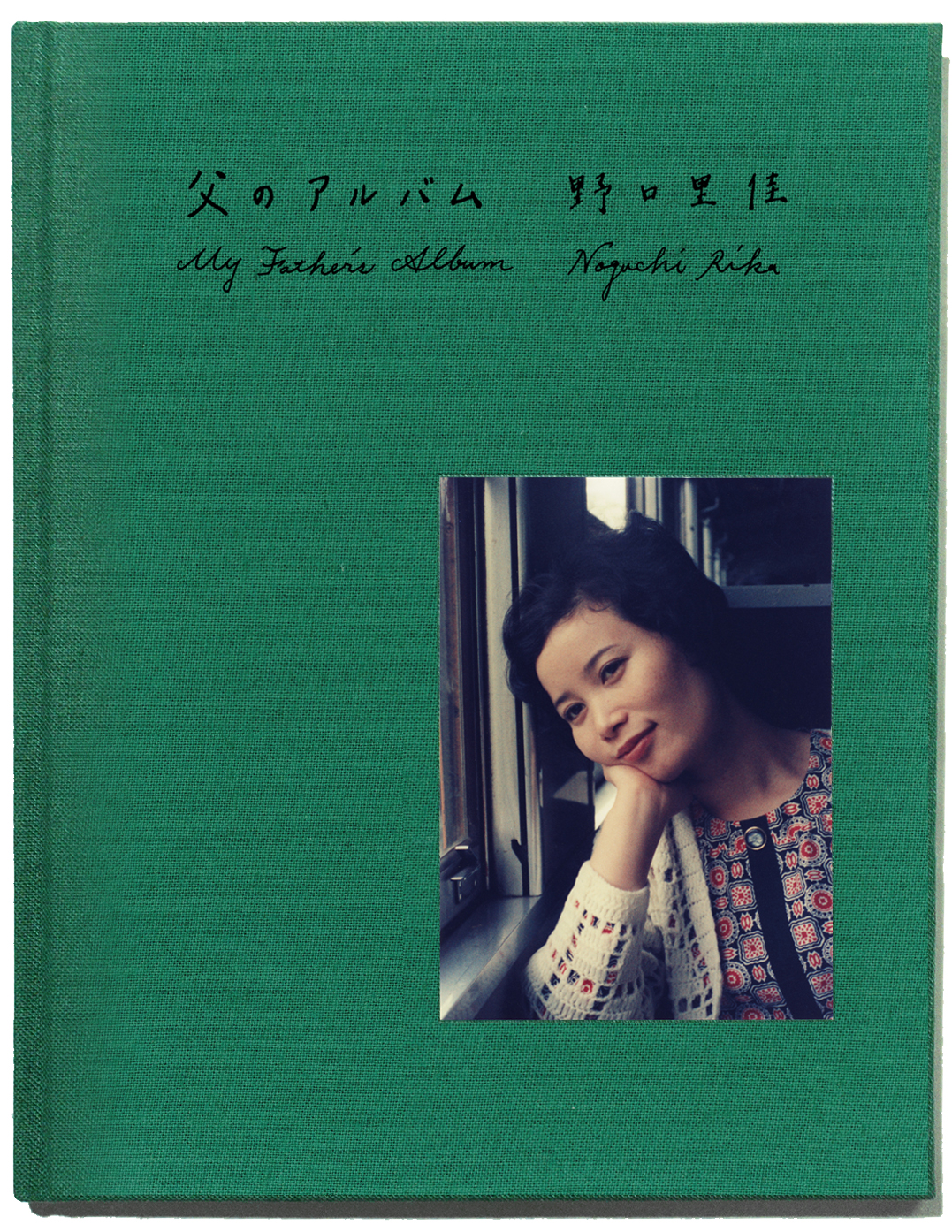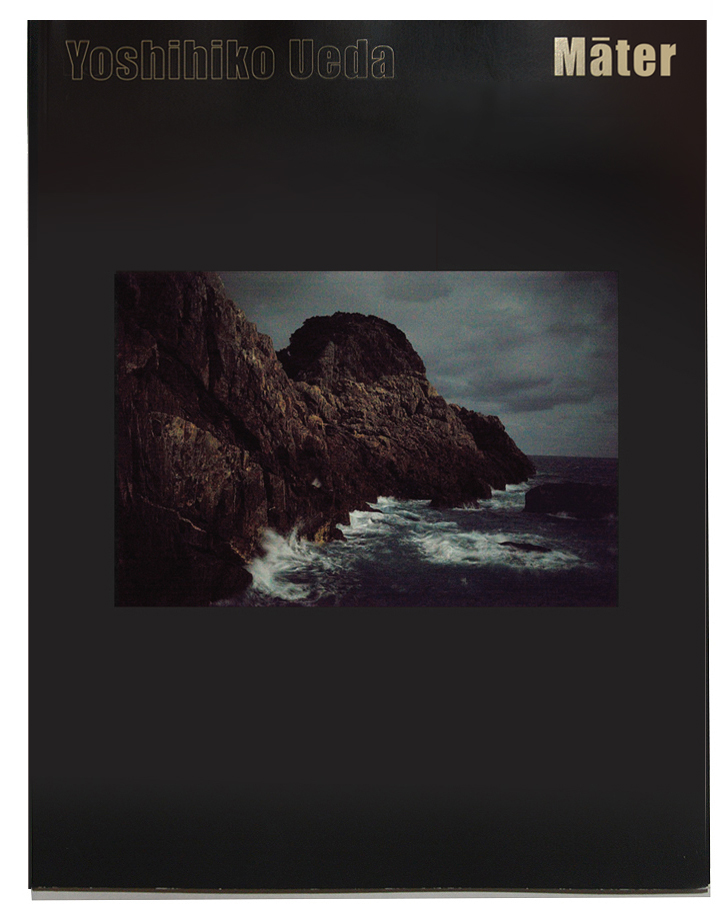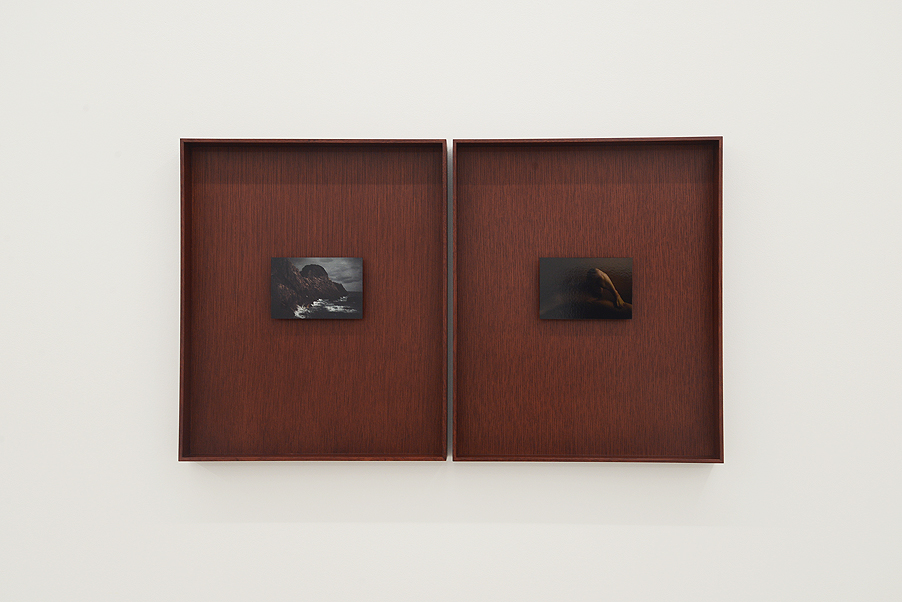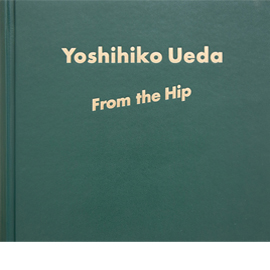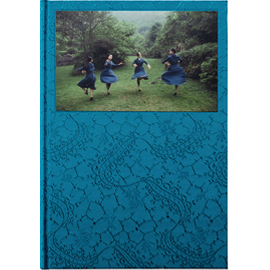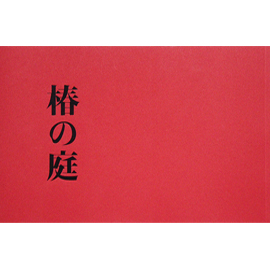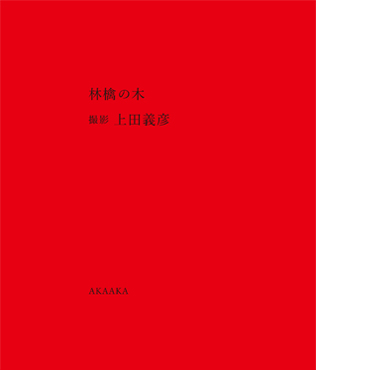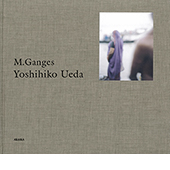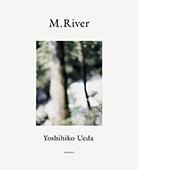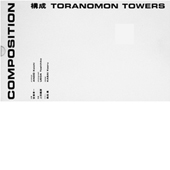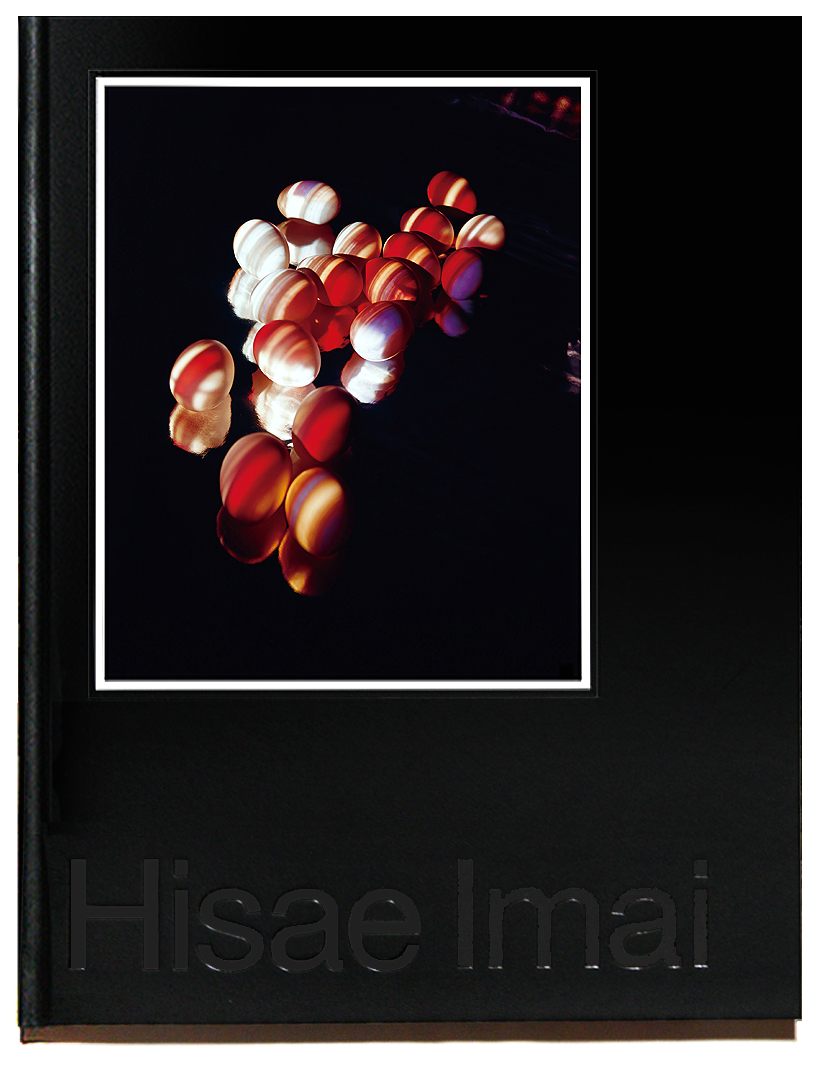
今井壽惠『Hisae Imai』
Book Design:木村稔将 発行:赤々舎 Size: H290mm ×W215mm Page:176 pages Binding:Hardcover Published in October 2022 ISBN:978-4-86541-144-7 |
¥ 6,000+tax
国内送料無料! お支払い方法は、銀行振込、郵便振替、 クレジットカード支払い、PayPal、PayPay よりお選び頂けます。 |
|---|
About Book
1950年代からの伝説の名作を初集成。 蘇る今井壽惠
|
004
Re-encountering Hisae Imai Masako Toda |
006 蘇る今井壽惠 戸田昌子 164 今井壽惠 年譜 |
今井邦子/ 梅田千織/ The Third Gallery Aya/ 写真弘社
Hisae Imai
Hisae Imai was an unconventional photographer. With the encouragement of a friend of her father Yasumichi, a professional photographer who ran the studio at the Matsuya Ginza department store, she made a brilliant debut in 1956 . This first solo exhibition, Daydreams, attracted tremendous attention even though at the time she had no real intention to make a career of photography. With this exhibition as a starting point, she continued to pursue her artistic instincts while also taking on fashion and commercial projects, and then she took over her father's studio when he died suddenly in 1960 . Because female photographers were a rarity back then, in 1957 she took it upon herself to start an association for women photographers. These days, the emphasis tends to be on the fact that Imai was female. However, what really distinguished her was that she was a mold-breaker who wore three different hats: she was a fine art photographer, a commercial photographer, and a portrait studio photographer. Whether male or female, this was almost unheard of in Japan.
Hisae Imai enjoyed smooth sailing as a photographer: in 1959 she received the Japan Photo Critics Association Newcomer's Award and in 1960 she received Camera Geijutsu magazine's Geijutsu Art Award. But then tragedy struck on June 1962. A taxi that she was riding in was involved in a traffic accident and she temporarily lost her eyesight. For the photographer, this was a major crisis. The accident left a scar on her face and resulted in her being rejected by her fiancé, and these things must have been painful. Nevertheless, in March of the following year she plunged into her first solo exhibition after the accident, titled Teeth--A Fantasy, and then in June she mounted her seventh solo exhibition featuring the Lone, Rose Party, and Dream Walk series. Sometime around 1965 she became absorbed in photographing racehorses and her exhibitions virtually stopped. The year 1970 marked five years since she had gone to Europe in search of horses, and there was virtually no news of her. Then, in 1975 she mounted her Hippolatry: Enchanted by Horses show, a major success that toured department stores in the cities of Osaka, Kyoto, Tokyo, and Sapporo. Afterwards, she remained active as a horse photographer, and following her death in 2009 the Japan Racing Association awarded her the Equine Culture Award of Merit.
There were the poetic early works--in which forms that combine the abstract and the literal were expressed in then-rare color photographs, as if painting a picture with a photograph--but then she was also a horse photographer, flying hither and thither around the world in pursuit of famous horses. I think that what at first glance appears to be a duality in Imai can be understood in light of the fixation on the body that is expressed in her work. The Ophelia series (1960 ) is perhaps the most acclaimed of her early works. It takes the tragic young noblewoman Ophelia of Shakespeare's Hamlet as its leitmotif, but the body swap is Imai's own idea. In Imai's novel reimagining of the story, just as Ophelia is singing, about to sink into the water, an old woman appears, and after talking with Ophelia they exchange bodies.
According to Imai's sister Kuniko", When she had surgery, the transfusion replaced the blood throughout her entire body, and it seems like my sister's personality changed quite a bit. Someone who had been obsessive became easy-going."This episode--in which a person undergoes a transformation after a blood transfusion--overlaps in places with her Ophelia story, in which two Ophelias exchange bodies. An old woman swaps bodies with a young and beautiful--but deranged-- Ophelia, who is unaware that she will die. Surprisingly, the body swap leitmotif had appeared in Imai's work even before the accident." [...]
Imai's first project after returning from her accident was Teeth--A Fantasy (1963 ). She had been creating works with teeth as a leitmotif for some time, and she brought them together for a camera magazine piece called Fantasy: Eyes and Teeth. The works that she showed at the "NON"exhibit alongside her contemporaries Eikoh Hosoe, Ikko Narahara, Kikuji Kawada likewise adopted eyes as a leitmotif. After the accident, however, eyes and teeth both depict a pitiful state, painful to behold. There is little evidence of an external agent using the body for its amusement, but the photographs present bodies that are objectified; enfeebled bodies that have been punctured, battered, and injured. They express the intimacy and pain of that sensation.
Just three months after Teeth, Imai's playfulness was once again on display when she mounted her seventh solo exhibition showcasing the Lone, Rose Party, and Dream Walk series. In Lone she uses women's faces and hair to play with colors, negative/positive inversion, and multiple exposures. In Rose Party, a voluptuous, alluring model wears a weighty crown of roses. Imai's world of free-ranging imagination unfolds in works like Dream Walk, where Yoko Kamoi is joined by other men and women looking like dodgy characters in a free-for-all romp.
During this solo show, Imai was selling the rights to use photographs for commercial purposes. The venue, the Fuji Photo Salon, had come up with this idea as a way of leveraging the gallery space. But as a result, her exhibition was ridiculed as the"money-grubbing Hisae Imai solo show." The initiative had been an attempt to strike a balance between art and commerce amid the growing commercial demand for photography leading up to the Tokyo Olympics, but it was misunderstood. The same kind of criticism was also leveled against Imai's public photograph sales at the venues where her Hippolatry: Enchanted by Horses show was exhibited. At the time, Imai was selling prints that were quickly produced by a photo lab to the public, and this became the subject of criticism.
Rather than their visual beauty, Imai may have been taken by horses due to their profound energy, grace, and tenderness, which far surpasses those characteristics in humans. For Imai, who was injured both physically and mentally by the accident, the tenacity and tenderness of horses must have been therapeutic, more than anything else. Up to this point, Imai had approached the female body through play: by transforming the body into an object or by exchanging bodies. When she was seriously hurt, rather than introspectively looking at her own body and mind in the same manner, perhaps she instead sought out something strong and beautiful outside of herself; something from the outside that would be overwhelming, and thus captivating. For Imai, this must have been horses. She grappled with something akin to being in love with the horse, a subject that was beyond her control. Rather than facing her own uncontrollable mental and physical state, she instead threw herself into pursing the uncontrollable horse as a subject. For Imai, it may have meant transforming and healing her own body by using her camera to put her entire body and soul into looking at her subjects.
Imai called her horse photographs"dream merchandise" She tried selling small prints for 8,000 yen, with the printing outsourced to a reliable photo lab that would deliver the prints to buyers within two weeks. But Imai's experiment ran counter to the ideas of the photographic establishment, which was moving in the direction of limited-edition original prints. When Imai called her own work "dream merchandise"to be sold at department stores, she was taking a completely different position from the rest of the Japanese photography world. Her highly acclaimed fine art photography book Hippolatry (1977 ) received the Photographic Society of Japan Annual Award, but afterwards the female photographer who had once been well-received in the photography mainstream became estranged from the establishment.
Imai was determined to sell photos at department stores because her own father, Yasumichi, had been a portrait photographer who ran the studio at the Matsuya Ginza department store. Sometime around 1954 , before her debut, Imai met Shuzo Takiguchi, an art critic who was a client of her father, to have him view her work. He encouraged her, saying that the work had potential and she should keep at it . Imai's debut exhibit, Daydreams, was shown at the Matsushima Gallery, which was across from her father's Matsuya Ginza studio. Other artists who showed at the same gallery that year included Ikko Narahara, Kansuke Yamamoto and Keiichiro Goto.[...]
Matsuya Ginza also served as the venue for the 1962"NON"show. Department stores were where Imai got her start. In an era when art museums were still largely a male preserve, perhaps Imai just wanted to sell her beloved horse photographs in department stores, which were, after all, places where there was no gap between men and women, places that evoked a feeling of happiness upon entering, and places where people could dream.
In 1962 , Imai's confidante Yoko Kamoi wrote", I am not qualified to speak about the value of her Ophelia in a professional context, but I cannot deny that I felt unease and mistrust toward the photography world, which had to wait until now, and only now, for this phantasmagoric series to be presented." These words seem prophetic, telling us that Hisae Imai--who was the most successful female photographer in the history of Japanese photography--had set out on a path that would ultimately cause her to be forgotten by the establishment. Staging her shots to create photographs that were rooted in illusion and poetry, she was a mold-breaking photographer who was also commercially successful, setting her apart from the conventional world of photography in Japan.
Extracted from the text "Re-encountering Hisae Imai"
Masako Toda
Past Exhibiton
今井壽惠 展「オフェリアその後」 会期:2022年4月2日(土)〜30 日(土) 時間:12:00〜19:00(水曜-金曜) 12:00〜17:00(土曜) 火曜 by Appointment only 会場:The Third Gallery Aya (大阪市西区江戸堀1-8-24 若狭ビル2F) 日・月休 |
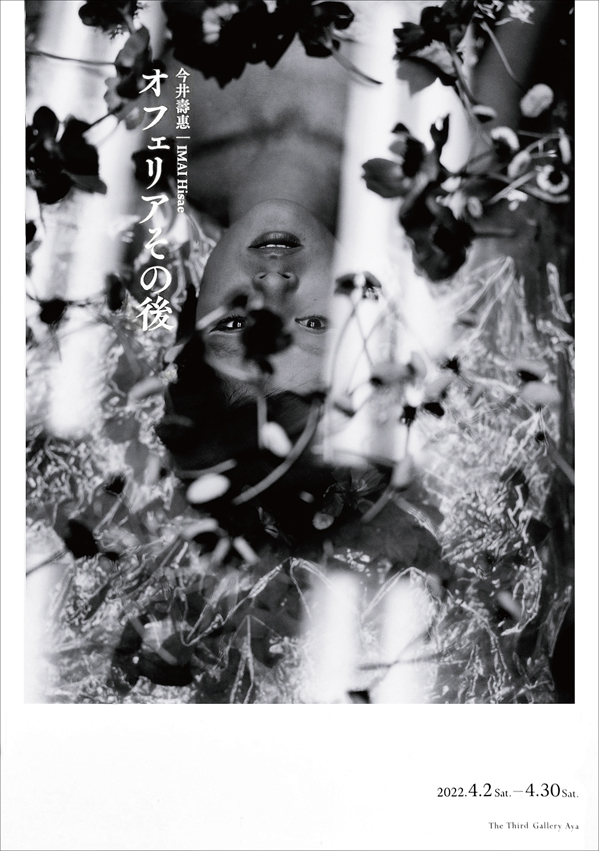
|
Artist Information
今井壽惠 1931年東京生まれ。中野にあった「今井写真館」を経営する父・今井康道と母・羊子の長女として生まれる。52年文化学院美術科卒業。56年初個展「白昼夢」を開催。翌年 「女流写真家協会」(世話役として今井、赤堀益子)を設立。 1962年写真評論家の福島辰夫の企画による「NON」展(石元泰博、東松照明、川田喜久治、丹野章、中村正也、奈良原一高、佐藤明、早崎治、細江英公が参加したグループ展)に参加。同年6月、タクシーに乗車中の衝突事故により、視力を一時的に失う。翌年、通院のかたわらで制作された「目」と「歯」の作品を発表。第7回個展にて本格的に写真家として復帰。広告用途としての写真の版権を譲渡する試みを会場で行い、ファッションの仕事も再開した。69年作品「春の妖精」が、タイム・ライフ社の選ぶ「Great Printmakers of Today」に選ばれる。1970 年以後は、競走馬の撮影にのめり込んだ。 |
|
受賞:
1959年 日本写真批評家協会新人賞
1960年 『カメラ芸術』芸術賞
1971年 アメリカ「The Society of Publication Designers」銀賞
1978年 日本写真協会年度賞
2010年 2009 年度 JRA 賞馬事文化賞功労賞
パブリックコレクション:
日本大学
ニューヨーク近代美術館
ジョージ・イーストマンハウス国際写真美術館
パリ国立図書館
ハンブルグ装飾美術館
川崎市市民ミュージアム
東京都写真美術館
清里フォトアートミュージアム
Hisae Imai
1931 Born in Tokyo, Japan
1952 Graduated from Bunka Gakuin
2009 Died
Solo Exhibitions
1956 Daydreams, Matsushima Gallery, Tokyo. Jun.30 -Jul.6
1957 Imaginary Landscape, Fuji Photo Salon, Tokyo & Osaka. Oct.25 -28 (Tokyo), date unrecorded (Osaka).
1959 A Donkey, the King and Myself, Gekko Gallery, Tokyo. Oct.1 -10
Memories of Summer, Fuji Photo Salon, Tokyo. Oct.21 -27
1961 Model and North Wind, Gekko Gallery, Tokyo. Mar.22 -31
1963 Teeth -- A Fantasy, Gekko Gallery, Tokyo. Mar.11 -20
Hisae Imai Exhibition -- Lone, Rose Party, and Dream Walk. Fuji Photo Salon, Tokyo. Jun.28 -Jul.7
1971 Pilgrimage to Horses, Shinjuku Nikon Salon, Tokyo
1975-76 Hippolatry: Enchanted by Horses, touring Osaka Takashimaya, Kyoto Takashimaya,Nihombashi Takashimaya and Sapporo Tokyu department store
1977 Le Monde Enchanteur des Chevaux, Hotel Astoria, Brussel and Nikon Salon, Paris
1984 A Visionary Farm, Tamagawa Takashimaya. Sep.27 -Oct.2
1989 Admirable Horses: Hisae Imai Solo Exhibition, Nihombashi Takashimaya, Tokyo. Dec.26 -Jun.9,1990 and Namba Takashimaya, Osaka. Jun.11 -16 1990
1993 The Royal Ascot, JRA Racing Museum, Tokyo
2002 Hisae Imai: forty years with horses, Kiyosato Museum of Photographic Arts, Yamanashi. Jul.20 - Jan.19, 2003
Selected Group Exhibition
1956 International Subjective Photography Exhibition, Nihombashi Takashimaya, Tokyo. Dec.11 -16
1957 Hisae Imai and Toyoko Tokiwa Exhibition, Gekko Gallery, Tokyo. Jun.11 -20
1958 1st Exhibition for the Association of Women Photographers, Konishiroku Photo Gallery, Tokyo. Apr.11 -16 .
1960 Ophelia, Konishiroku Photo Gallery. Apr.22 -27
1962 NON (curated by Tatsuo Fukushima), Matsuya Ginza department store, Tokyo. Jun.5 -10
1963 Contemporary Photography 1961 -62, National Museum of Modern Art, Tokyo. Jan.5 -25
1991 Innovation in Japanese Photography in the 1960s, Tokyo Photographic Art Museum. Apr.18 -Jun.18
Photographys in Japan 1955-65: Independent Images, Yamaguchi Prefectural Art Museum. Nov.28-Dec.23
1995 25 Photographers in Their 20 s,Kiyosato Museum of Photographic Arts, Yamanashi.
A History of Women Photographers, The New York Public Library and The National Museum of Women in the Arts.
2002 My Photo Collections: With Fine Horses, Fuji Photo Salon, Tokyo. Nov.8 -14 and Fuji Photo Salon, Osaka. Nov.22-28
2021 Paris Photo 2021. Grand Palais Ephémère, Paris, France
Prize
1959 The Japan Photo Critics Association Newcomer's Award
1960 Camera Geijutsu Art Award
1971 The Society of Publication Designers
1978 Photographic Society of Japan Annual Award
2010 The Equine Culture Award of Merit by the Japan Racing Association
Public collection
Nihon University, Tokyo, Japan
The Museum of Modern Art, New York, New York, NY
George Eastman House Collection, Rochester, NY
Bibliothèque nationale de France, Paris, France
Museum für Kunst und Gewerbe Hamburg, Hamburg, Germany
Kawasaki City Museum, Kawasaki, Japan
Tokyo Photographic Art Museum, Tokyo, Japan
Kiyosato Museum of Photographic Arts, Hokuto, Japan
Related Items
|
|
|
|---|

